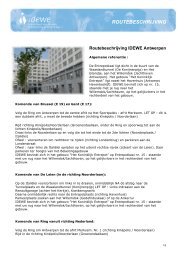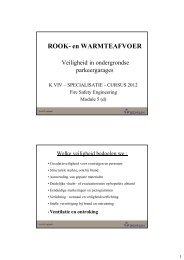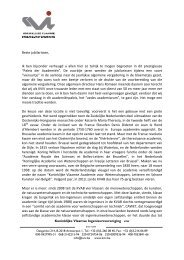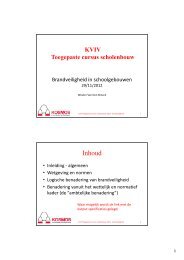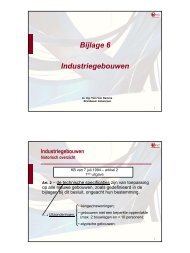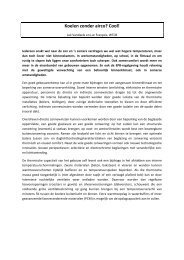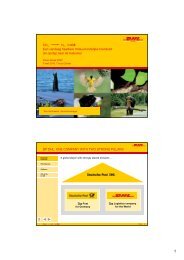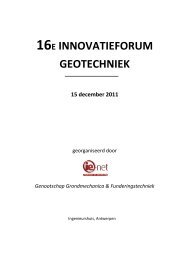Schoonbaert volledig - ie-net
Schoonbaert volledig - ie-net
Schoonbaert volledig - ie-net
Create successful ePaper yourself
Turn your PDF publications into a flip-book with our unique Google optimized e-Paper software.
An Updated International Survey ofComputer Models 95<br />
Model Country<br />
identif<strong>ie</strong>d in the original survey. This trend is due to the fact that detector<br />
response, particularly thermal detector response, is a well-known phenomenon<br />
that is already modeled fairly accurately by the current models. A<br />
growing number of f<strong>ie</strong>ld models also allow for smoke and thermal detection.<br />
Table 3 lists the detector response models identif<strong>ie</strong>d for the survey.<br />
Egress Models<br />
Table 3. Identif<strong>ie</strong>d detector response models.<br />
Identifying<br />
Reference Description<br />
DETACT-QS US [78] Calculates thermal detector activation<br />
time under unconfined ceilings,<br />
arbitrary fire<br />
DETACT-T2 US [79] Calculates thermal detector activation<br />
time under unconfined ceilings, t 2 fire<br />
G-JET NORWAY [80] Smoke detection model<br />
JET US [81] Zone model with particular attention to<br />
fusible links of sprinklers and vents<br />
LAVENT US [82] Zone model with particular attention to<br />
fusible links of sprinklers and vents<br />
PALDET FINLAND [83] Response of sprinklers and fire detectors<br />
under an unconfined ceiling<br />
SPRINK US [123] Sprinkler response for high-rack storage fires<br />
TDISX US [84] Warehouse sprinkler response<br />
These models have been identif<strong>ie</strong>d by the authors, but no references or survey information was<br />
provided: HAD (US).<br />
Egress models predict the time for occupants of a structure to evacuate. A<br />
number of egress models are linked to zone models, which will determine the<br />
time to the onset of untenable conditions in a building, but there are also<br />
stand-alone versions available. Egress models are often used in performance-based<br />
design analyses for alternative design code compliance and for<br />
determining where congestion areas will develop during egress.<br />
Many of these models are quite sophisticated, offering unique computational<br />
methods, as well as interesting features including the psychological<br />
effects of fire on occupants due to the effect of smoke toxicity and decreasing<br />
visibility [5,6]. Many of these models also have useful graphical features so the<br />
movement of people in a building can be visualized during a simulation.<br />
Approximately four times as many egress models have been identif<strong>ie</strong>d in<br />
this work than were identif<strong>ie</strong>d in the original survey [1]. This trend is again<br />
due to the fact that improved computer resources allow egress models to be<br />
created for more complex geometr<strong>ie</strong>s involving the movement of larger




